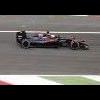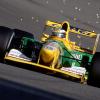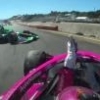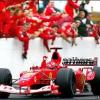It seems to me that most people involved in F1 agree the biggest problem preventing close racing is the cars' reliance on aero, which means they have a significant disadvantage to the car in front as soon as they get within a second or two.
It also seems to me that there are some simple solutions involving increasing the level of mechanical grip v aero and/or focussing on ground effect.
So my question is what is stopping the regs being changed to solve the problem?
Who gains from having such a reliance on aero and who is preventing the sport moving away from it?
Is it purists who view maximum speed and engine noise as more important than close racing? Designers like Newey?
I'm struggling to understand why such a long running problem has not been dealt with whilst they have overtaking strategy groups coming up with 'plaster over the cracks' solutions like DRS that ignore the fundamental problem.
What am I missing?
Disclaimer - Yes I am a Lewis fan who was frustrated at the weekend but that merely focussed my attention on the issue, I would hope that we can look beyond team/driver allegiances although I am happy to hear viewpoints from those who don't think it's a problem.








































